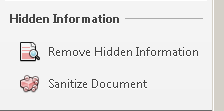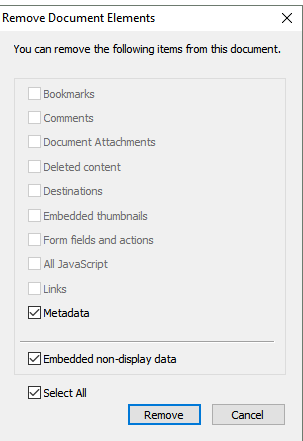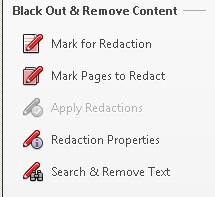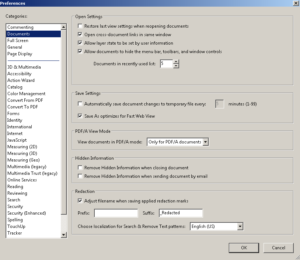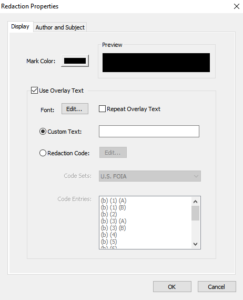ABA TechShow 2019 NCBA Member Discount and Some Redaction Tips
POST SPONSORED BY ABA TECH SHOW 2019
Take Advantage of Extended Early Bird Pricing until Jan. 21. North Carolina Bar Association Members Get $150 Off Standard Registration.
As a member of the North Carolina Bar Association, we want you to know that you can register for ABA TECHSHOW 2019 at a special reduced rate. This discount only applies to registrants that qualify for the Standard registration and will save you $150. You can register online and include this unique discount code: EP1913 at checkout to receive the discount.
ABA TECHSHOW has over 31 years of experience bringing lawyers and technology together. Legal work today is dependent on technology to manage day to day activities, to practice more competently, and to service clients more effectively. ABA TECHSHOW teaches you how technology can work for you. Through the expansive EXPO Hall, presentations, and workshops, you will be able to get your questions answered and learn from the top legal professionals and tech innovators, all under one roof. Regardless of your expertise level, there’s something for you at ABA TECHSHOW.
Network with legal technology experts from around the globe, Feb. 27 – March 2, 2019, at the Hyatt Regency Chicago. Don’t forget to visit www.techshow.com for current information on ABA TECHSHOW 2019, the best place for bringing lawyers and technology together.
Curious about how to remove PDF metadata or properly redact a PDF? Here is an an excerpt from PDFing for Lawyers from ABA TECHSHOW 2018 written and presented by Bryan Sims and Nerino Petro. Read the full article to learn more about how to harness PDF power in your practice.
How to Remove Metadata from a PDF
Every electronic file contains metadata. Metadata is often described as “data about data.” At its most basic form, metadata is simply information contained in a file that is not readily apparent from simply viewing the file itself. Examples of metadata in a PDF include author details, Subject, Title, and File name.
Every file contains metadata, and that is not inherently a bad thing. However, there are times that the Rules of Professional Conduct require you to take steps to ensure that you do not accidentally disclose confidential or privileged information when transferring a file, which includes disclosing this information from the inclusion of metadata in the PDF or other electronic file. Thus, you may need to take steps to remove metadata from your file. The ABA Legal Technology Resource Center has a useful chart and links to ethics opinions throughout the U.S. that pertain to metadata as well as a summary of that opinion. You will find this chart at http://bit.ly/13OrpXp .
Metadata is generated in a file in several different ways. First, every program that creates electronic files, creates metadata, including Acrobat and Power PDF. Automatically generated metadata includes information such as the file name, the date and time the file was created, who created it, the last date it was modified, etc. who created, etc. Additionally, depending on how the PDF was created, it is possible to include metadata from an underlying program into a PDF such as comments from Word. You can also add your own metadata to a PDF. You may be asking “Why would I want to do that?” The answer is that it can help you find the file (add keywords), provide more details about who worked on the file, add comments or notes, etc. If you want to learn how to add metadata to a DF in Acrobat, check out this link: https://adobe.ly/2DypgJG. For Power PDF, check out this link: http://bit.ly/2DwTn40 . However, more common is the need to remove metadata from a PDF and both Acrobat and Power PDF (both Standard & Pro/Advanced versions) allow you to do this, here’s how: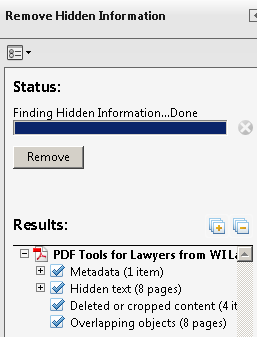
Fortunately, Acrobat allows you to examine your document and remove any confidential metadata. To examine a document for metadata, select the Tools > Protection > Remove Hidden Information. This process will reveal the metadata in your document, identify its location, and allow you to remove it as shown here.
The best part of the process is that removing the metadata is as simple as clicking the Remove button.
By doing this, you can ensure that any document that you send to another person has had any confidential information removed from it. Although no single software product can ensure that you comply with the Rules of Professional Conduct, Adobe Acrobat can help place you one step closer to helping you keep confidential information secure.
Power PDF places this function under its Security menu and provides a button for “Remove Elements.”
This opens the next screen where the end user determines what metadata is to be removed.
If you only want to remove Metadata, simply click the Remove button and you are done!
If you click the “Clean Document” button rather than the Remove Elements button, this triggers a removal of all of the elements including metadata with a single click.
6. Redaction
In addition to needing to protect information hidden in your document, you may also need to redact information that is visible on the face of the document itself. Common information that needs to be redacted includes birth dates, social security numbers, and account numbers. NOTE:
NOTE:
An important fact to keep in mind is that that once information is redacted in a PDF using a general PDF tool such as Acrobat or Power PDF, it is removed forever. Thus, you must always be careful to make sure that when redacting a document, you save it with a new name or start with a copy. If you fail to do so, your original file will be irretrievably redacted!
There have been a number of instances over the years where lawyers and others thought they had redacted the information from a document, but in fact failed to fully redact the information so that others were able to see the supposedly redacted information. Remember, the PDF, if it is not an image only PDF file, consists of the visible image and the invisible underlying text layer that can be searched, copied and pasted. If you create a PDF from Word but before you do, you draw a black box over the text, when the PDF is created the text layer is sent to the PDF along with the black box that covers it. Think of the PDF like a layer cake, where the underlying text is the bottom layer of the cake. Unless you cut all the way through the cake and remove not only the frosting and top layer, but the bottom layer as well, you’ve left something behind. The same applies to PDF files – you not only have to cut out the image, but also the invisible text layer as well. Luckily, the redaction tools of popular full featured PDF products, including Acrobat and Power PDF, include not only removing the image but the underlying text layer as well.
However, for Acrobat you will need the Pro version and for Power PDF you will need the Advanced version to have redaction capabilities.
Redacting information in Adobe Acrobat is a multi-step process. The first step is to mark the information that needs to be redacted. This can be accomplished in two different manners. First, you can use your mouse to manually mark the information that you want redacted. Second, you can have Adobe Acrobat search the document for patterns of numbers.
After you have marked the areas that you want to redact, you then need to tell the program to redact the information. Simply marking the information does not redact it.
One precaution that you can take is to change your preferences to append a prefix or a suffix automatically to the file when redacting. This forces you to save the file with a new name and prevent overwriting of the original file unless you do so affirmatively. To do this, go to Edit > Preferences. Under the Categories column on the left of the Preferences screen go to Documents and then go to the Examine Document section of the screen and select Adjust filename when saving applied redaction marks as shown in this next image.
To learn more about Acrobat’s Redaction tools, check out Rick’s Semi-definitive guide to Redaction in Acrobat at http://blogs.adobe.com/acrolaw/?p=125
Power PDF is similar to Acrobat in that Redaction is a two-step process. The Redaction tools are found under the Security menu as shown in this image.
You must first click the “Mark Redaction” to mark the area that you want to redact and then click the “Apply Redaction” button to complete the process.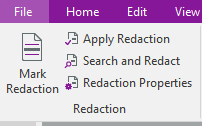
To learn more about Power PDF’s Redaction tools, check out this link: http://bit.ly/2DzluzI
Common to both products is the ability to set your Redaction Properties.
In Power PDF as shown in the image to the right, you can select the Mark color, whether or not to use Overlay text show the redacted area shows “Redacted” or something else as well as the color of the redacted area once it is redacted. Unfortunately, Power PDF does not have a similar feature to Acrobat that you can set to automatically add a prefix or suffix the file name when redacting so that you automatically save a new file and not overwrite the original.
One thing to keep in mind is that you can use your redaction tools to remove things for purposes other than security or confidentiality. For example, many forms that you scan in have information that you do not want to use. Similarly, some court forms have text that may not be applicable to a particular situation. In instances such as this, the redaction tool can be invaluable in removing the unwanted text. Of if you have a scanned document that has lines and other marks on it, you can use the redaction tool to remove these marks.
If you are doing a lot of redaction, we suggest that you invest in a dedicated redaction product. They offer greater capabilities, including not working on an original document when redacting thereby eliminating the danger of redacting and then saving your original file. These tools include RapidRedact (http://bit.ly/2Dxa7It ), Redact -It™( http://bit.ly/2DuY7r4 ) and Redax (http://bit.ly/2DwQLTO ) to name just a few.
